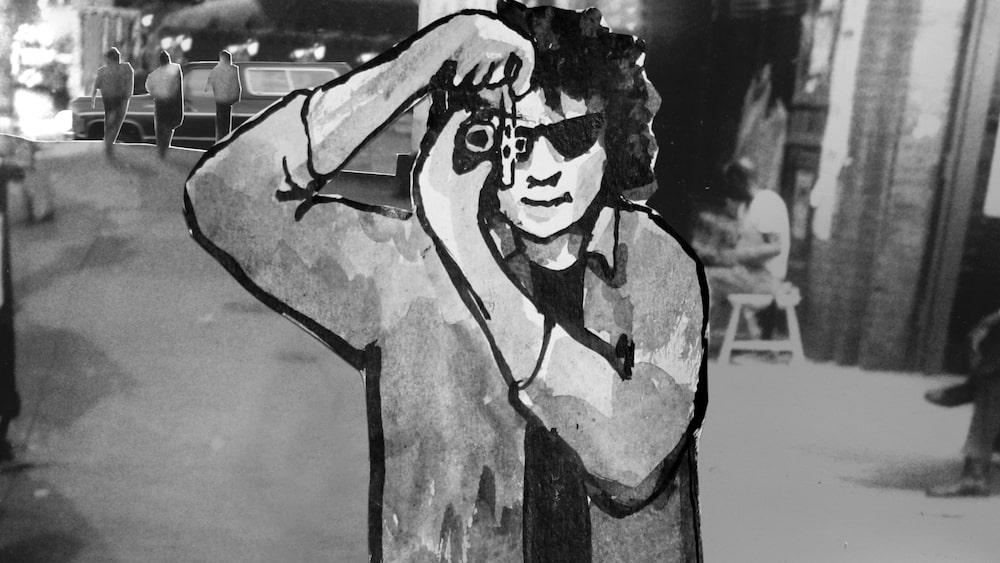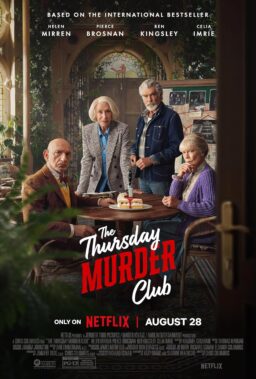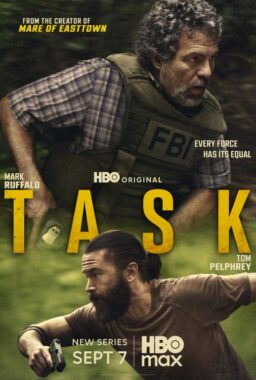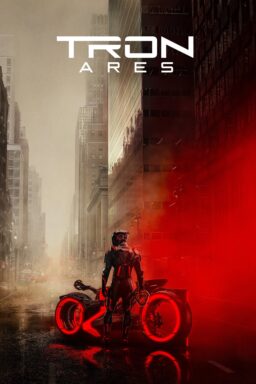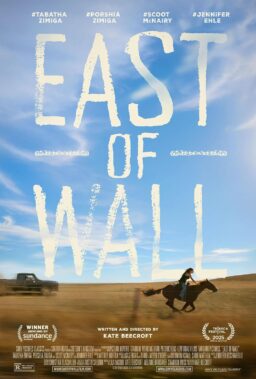As every rock historian knows, the legendary club CBGB’s, located in the Bowery of New York City, gave rise to some of the most important bands of the ‘70s. The Ramones, Talking Heads, Television and countless punk bands had many gigs in that space and was considered one of rock’s most sacred grounds. As photographer David Godlis says in the documentary “Shots In the Dark with David Godlis,” “I never really thought too much about whether or not this was a good night to go to CBGB’s. It was always a good night to go to CBGB’s.”
Thus kicks off Lewie & Noah Kloster’s lively documentary about Godlis and his years as the resident photographer of the infamous club. Godlis became a staple during the club’s heyday of 1976-1980, when some of the most influential NYC-based bands and touring bands would roll through town and play some of their most legendary gigs. He captured a youth culture in vivid black and white photographs that required a specific technique having to do with exposure (I’ll leave it to him to explain it), which made his style distinct and alive. He never asked anyone to pose for pictures, but caught some of the most iconic shots of club attendees living a kind of late night, lost generation-like lifestyle that seems alien today.
The Kloster’s bring their own unique aesthetic to the animated documentary form by rendering Godlis’ photographs into 3-D tableaus. This has been a more commonly used technique in documentaries over the past decade or so, but the Klosters employ a more hands-on approach by doing everything, well, by hand. Their lack of digital tools complements Godlis’ self-taught method of making the lighting in his photos more vivid. Anyone can use an iPhone and play with filters to make their photos more dreamlike and artistic, but the Klosters favor a more tactile approach that makes them the perfect chroniclers of this subject.
Of course, the music helps, too, and the doc fills just about every space with the sounds that once emanated out of the club on a nightly basis. Godlis, no doubt, has lots of stories to tell, and it would be great to have this in longer form. As it is, the Kloster’s film is concise and fun to watch, especially if you have a vested interest in this time, place and genre. I certainly do and this was one more page in the history of CBGB’s that I enjoyed learning about.

Q&A with Lewie and Noah Kloster
How did this come about? When did you meet Godlis?
Since nervously meeting Godlis for the first time, I’ve realized how easy it really is to find and meet him. You can find him anywhere and everywhere throughout the village in NYC, or at any sort of screening event in the city–especially at Film at Lincoln Center, where he often works as the event photographer. That’s where I met him. And he’s the sweetest, funniest, talkative guy I’ve ever met. I had always been a fan. I was familiar with his images since I was very young. Noah and I were nine and six years old when we found and fell in love with punk. I think Noah even went as Joey Ramone for halloween when he was eight years old. We love the music from that time and place (CBGB’s in the late ’70s) But more importantly, we’ve adopted the “punk”/DIY attitude when it comes to making our films and animations.
But when I was face to face with Godlis for the first time, it was the first time I was getting my information from the source, from someone who was THERE at CB’s in the ’70s. I was a nervous tongue-tied fan. But as soon as David started talking to me, he put me at ease and we got along great. That was where the friendship began. After some time of hanging out here and there at film screenings and events, I became nervous again because I wanted to ask David if we could make a film about his life and work. I knew David well enough at that point to know he was an absolute dream subject for a rollicking film like the one we wanted to make. I finally asked him and to our delight said yes.

Did he have any stories to tell that didn’t make the final cut?
What makes David’s stories extra special is that they’re not tabloid-y. They’re unbelievably tender stories about how the community of friends at CBGB’s was like a family. One of my favorite stories that I fought and fought for (which didn’t end up making it), was a story about a photograph he had taken. The photo is of Merv, the huge, intimidating bouncer of CBGB’s. He’s standing outside with two unopened Heinekens, grinning from ear to ear. Every night, Merv went up the block to the Tin Palace, because the only beer at CBGB’s was awful and warm. Merv himself didn’t mind the beer at CBGB’s, in fact another one of my favorite pictures (which is in the film) is Merv emphatically chugging a draft beer behind the counter. The two Heinekens he got every night were for the door-woman, Roberta Bailey. Something has always spoken to me about this picture–the smile on Merv’s face is contagious, especially knowing that he’s happy to be helping his friend get through another rough and rowdy night.
Without getting too far into the weeds, what is the process like to take a photograph and convert it, or render it, into a three dimensional shot (or tableau)?
David blessed us with his digital archive so from there, we put together a slideshow of his images that matched the stories he told. That was an exhilarating puzzle. So many decisions were made that, looking back, I can’t imagine repeating. After we decided on all the images, it was time to photoshop. All the subjects of every photo had to be digitally erased. Then we printed out the backgrounds and the subjects separately, then it was razor-blade time. So many blades. I don’t know how many we went through, maybe 50? Every subject had to be cut out by hand. Then the subjects and backgrounds had to be mounted to cardboard so a vice grips could hold them in place on a table. After that we could finally glide a camera through the scene! We would also smoke cigarettes while shooting most of the scenes to give it another dimension with some smoke in the air.
What draws you to this particular pre-digital technique of animation?
Apologies if this sounds grandiose, but the artistic discovery for us isn’t about what’s cutting edge. In fact, if we ever find ourselves with a race-like mentality, like “we need to learn this new software in order to be the first in the world to make a film like this,” we completely re-evaluate. Instead of racing to make art that looks different, we try to make art that’ll have our audience think, “finally, someone finally made something like this. I’ve always wanted to see something like this.” People have told us our work has a nostalgic feeling and I suppose this might be one of the reasons why. And also, everyone grows up with these materials. There’s nothing foreign about our work. Everyone who sees our work can probably wrap their mind around how we made it.
How are the tasks or roles divided up when it comes to co-directing?
Noah is the artistic genius and I’m the techie. He makes the drawings, paintings, sculptures and then I’m the one who animates them. I use a computer 90% of the days, and Noah uses his hands 90% of his days. It’s been a really even split of workload. When it comes to more abstract decision-making directors usually have to make, we enter into this pure honesty state with each other. We spit out every single one of our ideas and have no reservations when it comes to agreeing on the best idea. And we rarely have to debate. Once the best idea is out there, floating in the air, we’re really good at reeling it in together.
Was it difficult in zeroing in on what music to use to represent the spirit of CBGB at that time?
Zero-ing in on the music was a lot easier than we expected. Because we are such huge fans of all the music to come from that venue, we cast a wide net and eventually found ourselves talking with the awesome people at Numero Group. In the past, Godlis had provided his photos to Numero Group for free so he got us in contact with them and we were able to pull from their box-set release Ork Records: New York, New York. It was such a gift and a pleasure to peruse through the box set, trying different songs during different parts. Go buy that box set!
What’s next for you?
David is releasing his new photography coffee-table book Godlis Miami later this October, which you can preorder now here.
As for Noah and I, We got a hard-hitting heist film puppet show with the wonderful Sara Driver coming out soon! Submitting to fests now.

